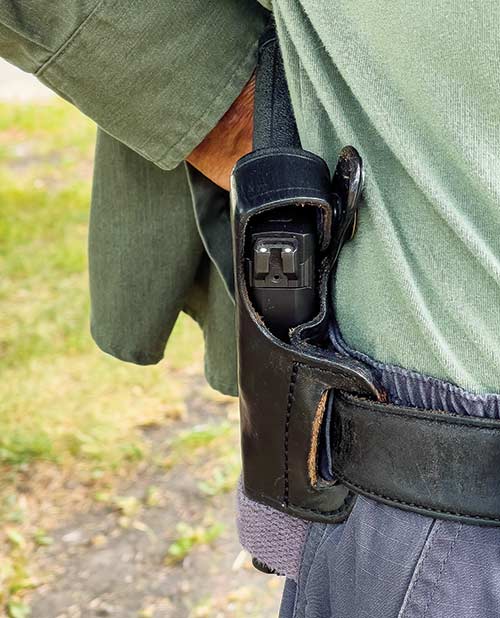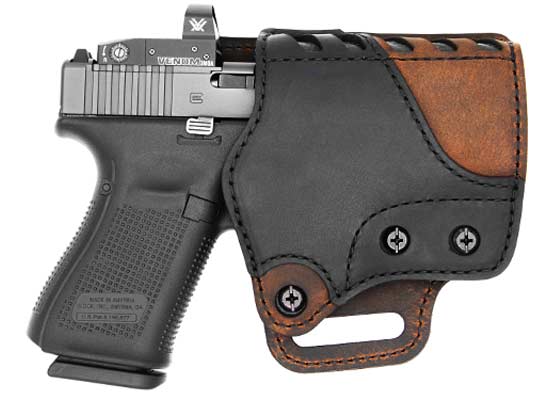Weight Loss
A Pound Makes A World Of Difference
So, there I was at the end of June this year, still on a trip that had lasted since the final week in May. Throughout I had been carrying one or another full-size all-steel 1911 “government model 1911 .45 automatic.” This trip included a 60-hour MAG-180 course (http://massadayoobgroup.com), which I had spent teaching primarily hand-to-hand fighting, while my colleague David Maglio ran the high-speed shooting stuff on the range.
You can’t teach H2H without demonstrating on the biggest, strongest people available, or the students will think you don’t have confidence in what you’re teaching. This class of three dozen students included many who were over 200 lbs., a couple of 300 pounders, and one huge staff member who weighs 400 lbs. of mostly muscle. It was cool to be able to say, “To show you how to escape a bear hug, I need … a bear! Yo, Marcus …”
Given I am built more like the “before” picture than the “after” picture in the old Charles Atlas bodybuilding ads, this took a bit of work. I had to go from there to a week at my favorite match ever, The Pin Shoot in Michigan followed by a 40-hour MAG-40 in the same state and another in Indiana. About the time I went from there to the next leg of the journey, the two deteriorating discs in my lumbar spine were talking to me rather stridently as was my sciatic nerve. For a few days, I’d had to switch to my “orthopedic holster,” the Bianchi X15 shoulder rig, to take the weight off the hips. It became difficult to conceal under the lightest cover garments during the heat wave going on then, so I realized I needed a weight reduction.
Taking The Weight Off
For the Pin Shoot, I had multiple guns along for the trip, including a Smith & Wesson Shield .45 for the Concealed Carry match at the event. Also along was a backpack with a holster to fit everything I might be likely to wear on the long trip, including a Ted Blocker thumb-break that fit the Shield.
I used a Springfield Range Officer with adjustable sights for the match and for each of the live-fire classes I taught. I like its size and its handling. It has an enhanced mag well for speed reloads, hosting a long 8-round magazine with buffer pad at the bottom, which extends butt length a bit. Carried at the hip, this was just enough to force my hip to go slightly forward on the right when behind the wheel on long drives. This is something that can exacerbate lower back issues. So, for when I wasn’t shooting, I carried a similar configuration SW1911 with a flush-bottom 7-round mag, which alleviated this particular problem.
As any Student of The Gun knows, a full-size all-steel 1911 .45 tips the scale to 39.5 oz. unloaded. My first-gen .45 Shield weighs 21 oz., an 18.5-oz. difference! The current Shield 2.0 .45 is spec’d by S&W for 22.9 oz. — still a 16.6-oz.
difference, more than a pound lighter. As soon as I completed the last class of the trip and got to my next stop, the little “plastic” S&W replaced the larger Smith .45 I was carrying.
The Shield .45 comes with a 6-round magazine fitting almost flush with the bottom of the frame, and a 7-rounder with extended bottom giving it about the same height as a standard 1911 but with a slimmer grip. I used the 7-rounder for carry in the Shield, giving me the same capacity I’d had with the flush-bottom mag in the full-size 1911.
And it took a full pound of steel off my sore hip.
Spellcheck says “shootability” isn’t a word, but you and I as shooters know better. The heavier gun’s weight absorbs recoil. Greater barrel length gives more sight radius for generally less human aiming error with iron sights, and also more velocity for more power. A bigger handgun may give you more gun for the hands to wrap around for improved control two-handed. This being said, the Shield’s slim frame gave me proportionally “more hand to wrap around the gun,” useful for one-hand shooting. The sights are good and the trigger excellent. Plus, the Shield .45 is accurate — it gave me a sub-1.5″ group at 25 yards with 185-grain Remington JHP when I tested it for this magazine a few years ago.
Bottom Line
At the 2023 Pin Shoot, my time to clear five tables of five pins each was only 1.9 seconds slower with the Shield than with the big 1911 in Stock Gun division, or 76/1,000ths of a second slower per pin. Back in 2019, when The Pin Shoot debuted its Concealed Carry division, my score with the Shield was actually better than with the heavy Pin Gun with recoil compensator, both running with 230-grain +P Federal HST .45 ACP. Suffice to say, the Shield’s “shootability” was and is out of proportion to its size and weight. Recoil is snappy but controllable with good technique.
Switching from the big .45 to the small one relieved considerable discomfort at very little loss of capability. My friend Clint Smith is famous for advising a defensive handgun needs to be comforting, not comfortable. The Smith & Wesson Shield .45 proves it can be both.
a href=”https://subscribe.pcspublink.com/websis/Order?p=GNSM&tr=JBSC” target=”_blank”>Subscribe To GUNS Magazine







